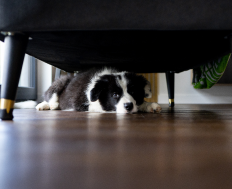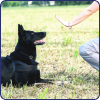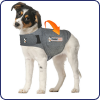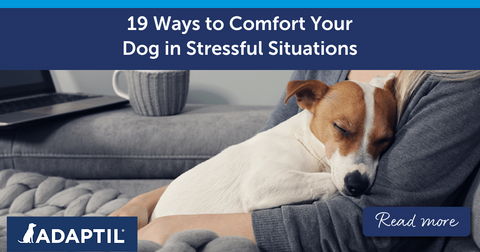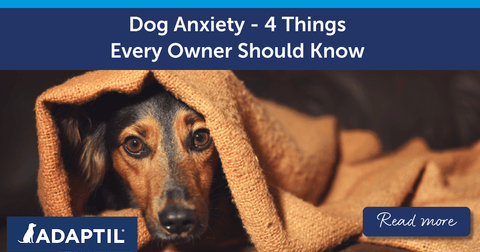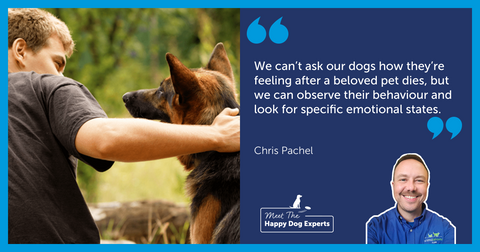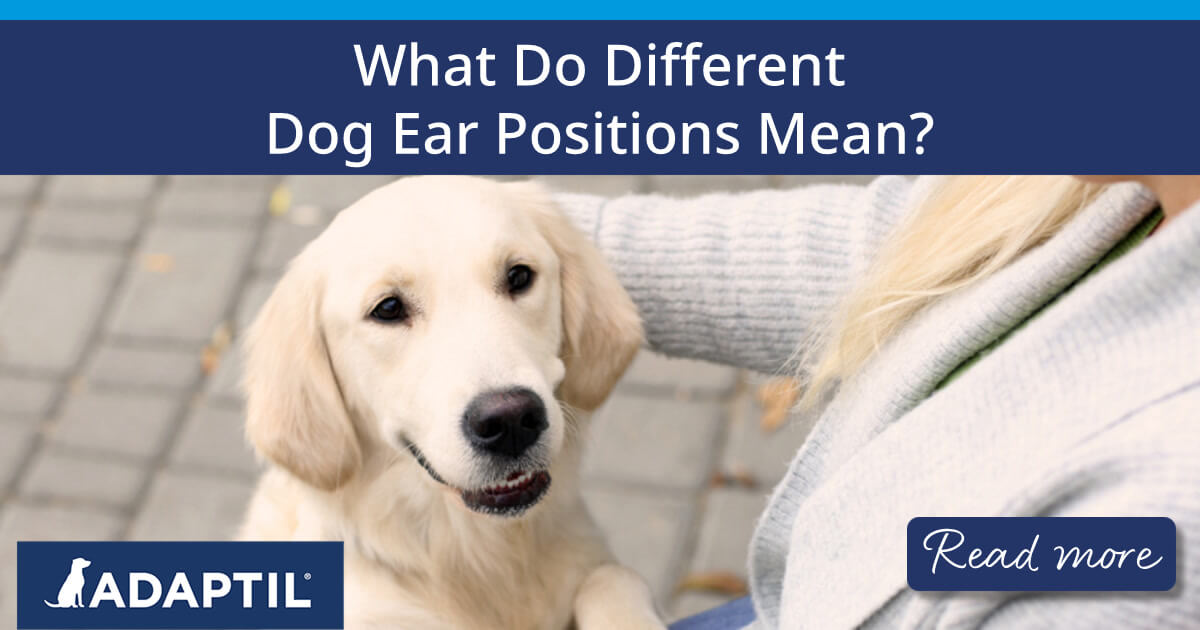
What Do Different Dog Ear Positions Mean?
We humans aren’t very good at wiggling our ears – and believe us, we’ve tried. But do you know who doesn’t have that problem? Dogs!
Our dogs have a whole range of ear movements at their disposal, from perked up and pointed to relaxed and neutral, plus everything in between. And interestingly, understanding what each of those ear positions mean can offer a fascinating insight into how dogs feel in different situations.
So, what are we waiting for? Let’s take a closer look at the meanings behind dog ear positions and how to interpret what your pooch might be trying to tell you!
5 Dog Ear Positions & Their Meanings
It may come as no surprise to learn that dogs use their ears to express a wide range of emotions – after all, all that ear movement must mean something! Whether they’re feeling calm and content or anxious and alert, a dog’s ear positions are a key part of their communication tool kit.
Here are five common positions and what they typically indicate:
Relaxed Ears – A Calm & Content Pup

When your dog’s ears are in their natural, neutral position, it usually means they’re feeling relaxed. You might also notice a loose wagging tail, soft mouth, and a generally chilled attitude. This is one of the easier dog ear positions to spot and is a great sign that they are comfortable and happy.
Perked Up Ears – Alert & Interested

Ears standing up straight and angled forward are a sign that your dog is paying close attention to something. They could be watching a squirrel dart across the garden or listening to a distant sound.
With their ears in this position, you may notice your dog become still, possibly holding their breath as they focus. Either way, it usually means something has caught their attention out of curiosity or excitement.
Ears Pulled Back – Anxious or Fearful

What does it mean when a dog’s ears are back? Well, if your pup’s ears are flattened against their head, it could be a sign they’re feeling worried. This is often accompanied by other stressed body language in dogs like a tucked tail, lip licking, yawning, or panting. The further their ears are pointed back, the more anxious or fearful they may be.
If your dog shows signs of discomfort, be sure to give them space and reassurance. A great way to create a soothing environment at home is by using an ADAPTIL Calm diffuser, which releases natural messages to help dogs feel calmer and more relaxed.
Rotated Ears – Assessing the Situation

When dogs rotate their ears to the side, it usually means they’re feeling unsure and are trying to figure out what’s going on around them. It’s a moment to watch closely to see how they respond next, as it’s not always possible to know how they’re going to react!
Switching Ears – Uncertainty or Focus

Dogs may move their ears between different positions when they’re trying to locate a sound, or, as when their ears are rotated to the side, they could be assessing how they feel about something. For instance, they could be picking up multiple signals and are unsure how to react. This is another situation to watch your dog’s body language closely!
Breed Differences in Dog Ear Positions
It’s important to note that not all dogs move or express their ear positions in quite the same way. Both the size and shape of a dog’s ears can affect how easily we can read their signals, and there are also distinct differences between breeds.
Certain breeds with upright ears, like German Shepherds and Huskies, often have highly responsive ears that are easy to interpret. Dogs with floppy ears, like Labradors or Beagles, are generally less responsive and therefore much harder to read. And then there are particularly long-eared breeds, like Basset Hounds, who may not show visible ear movements at all!
With breeds that have harder to interpret ears, it can be helpful to focus on the base of the ears rather than the ear itself, but movement can still be difficult to detect. In these situations, you’ll generally need to observe other aspects of your dog’s body language to understand how they’re feeling. In fact, this advice applies to all dogs, as it’s a good idea to get as full a picture of their emotional state as possible. In short, don’t rely on your dog’s ears to tell you everything!
What To Do If Your Dog Seems Uncomfortable
If your dog is showing signs of stress through their ears and other body language indicators (for example if they’re pacing or have tucked their tail between their back legs), here’s how to help:
-
Identify the cause – Look for loud noises, unfamiliar people or animals, or changes in their environment.
-
Create a safe space – Provide a quiet, comforting area for your dog to retreat to. Consider using an ADAPTIL Calm diffuser in this area for added reassurance.
-
Reward calm behaviour – Positive reinforcement goes a long way, so be sure to praise and treat your dog when they’re feeling relaxed. Avoid punishing them for showing fear.
-
Seek professional advice – If anxiety continues, seek advice from a vet to rule out any medical issues, and consider a qualified dog behaviourist for tailored training support.
By being aware of your dog’s signals, you can make sure they feel safe and supported. Our Dog Body Language Decoder Course is a great way to learn more.
And remember, if your dog’s ears are constantly in an unusual position, or they’re shaking their head or tilting it frequently, contact your vet. There could be a problem in their ear canal, so it’s best to seek professional help!
For more tips on understanding your pooch, continue browsing through the ADAPTIL blog. You can also sign up to our newsletter to get the latest updates and advice straight to your inbox!


